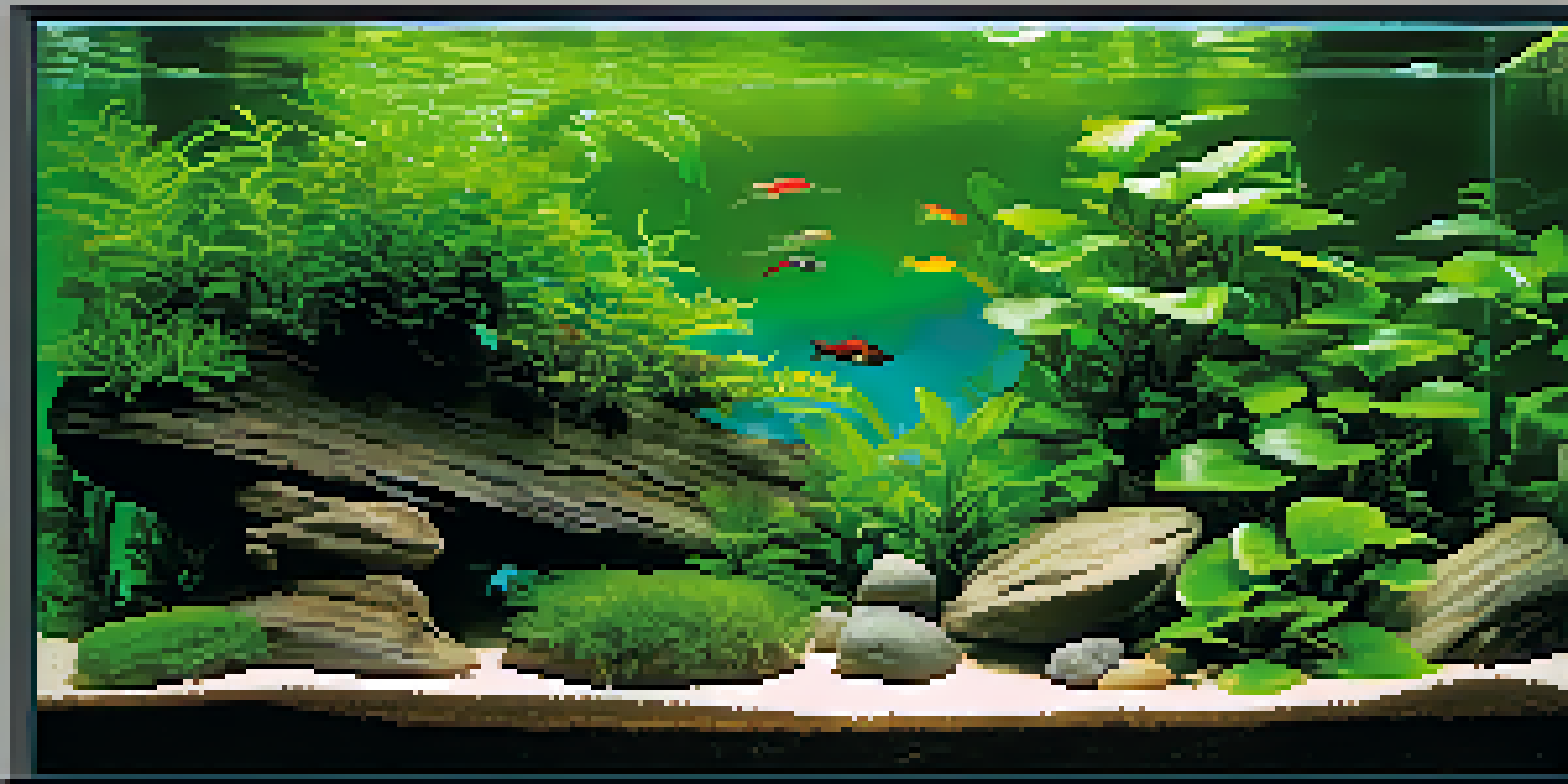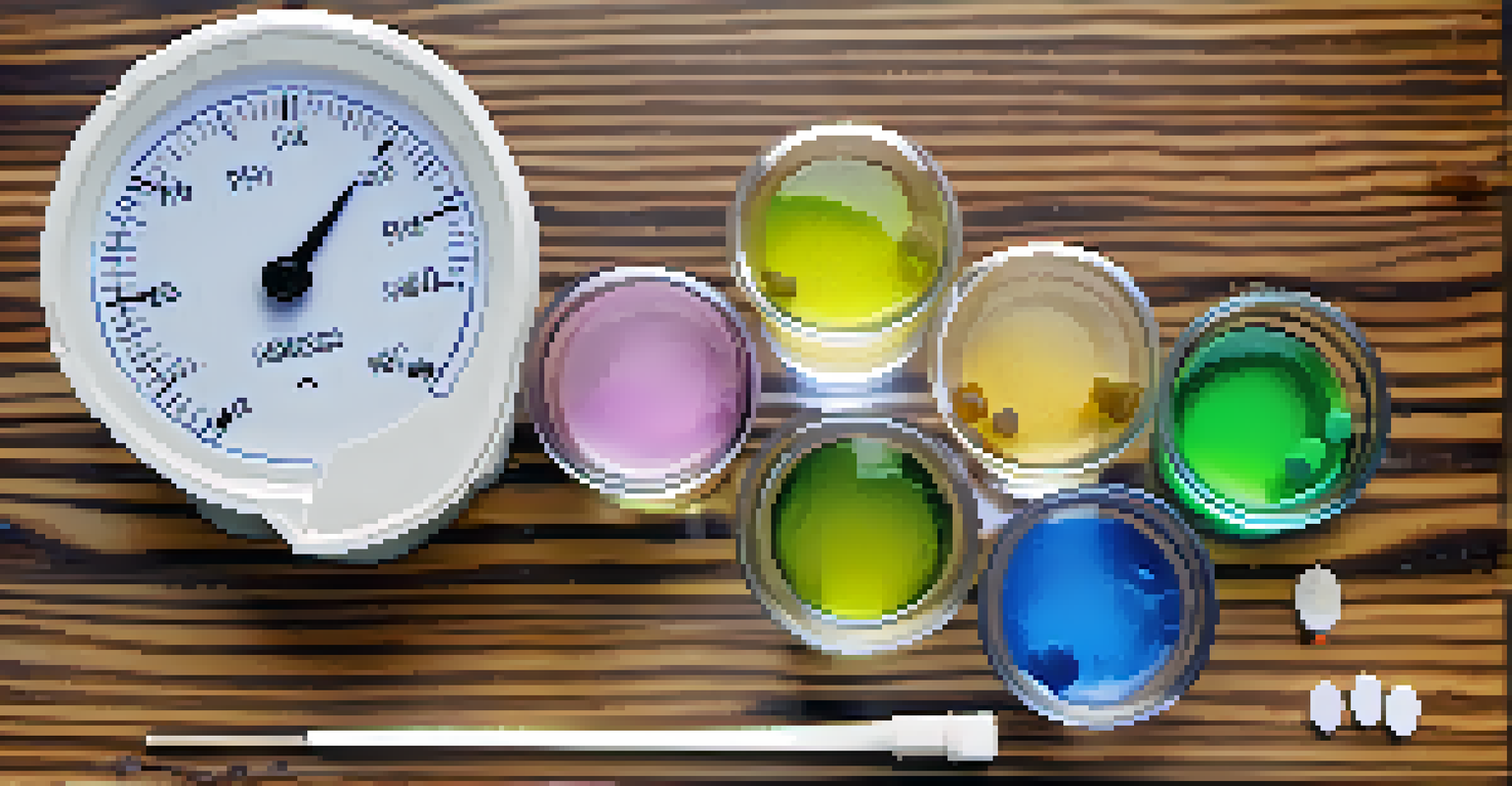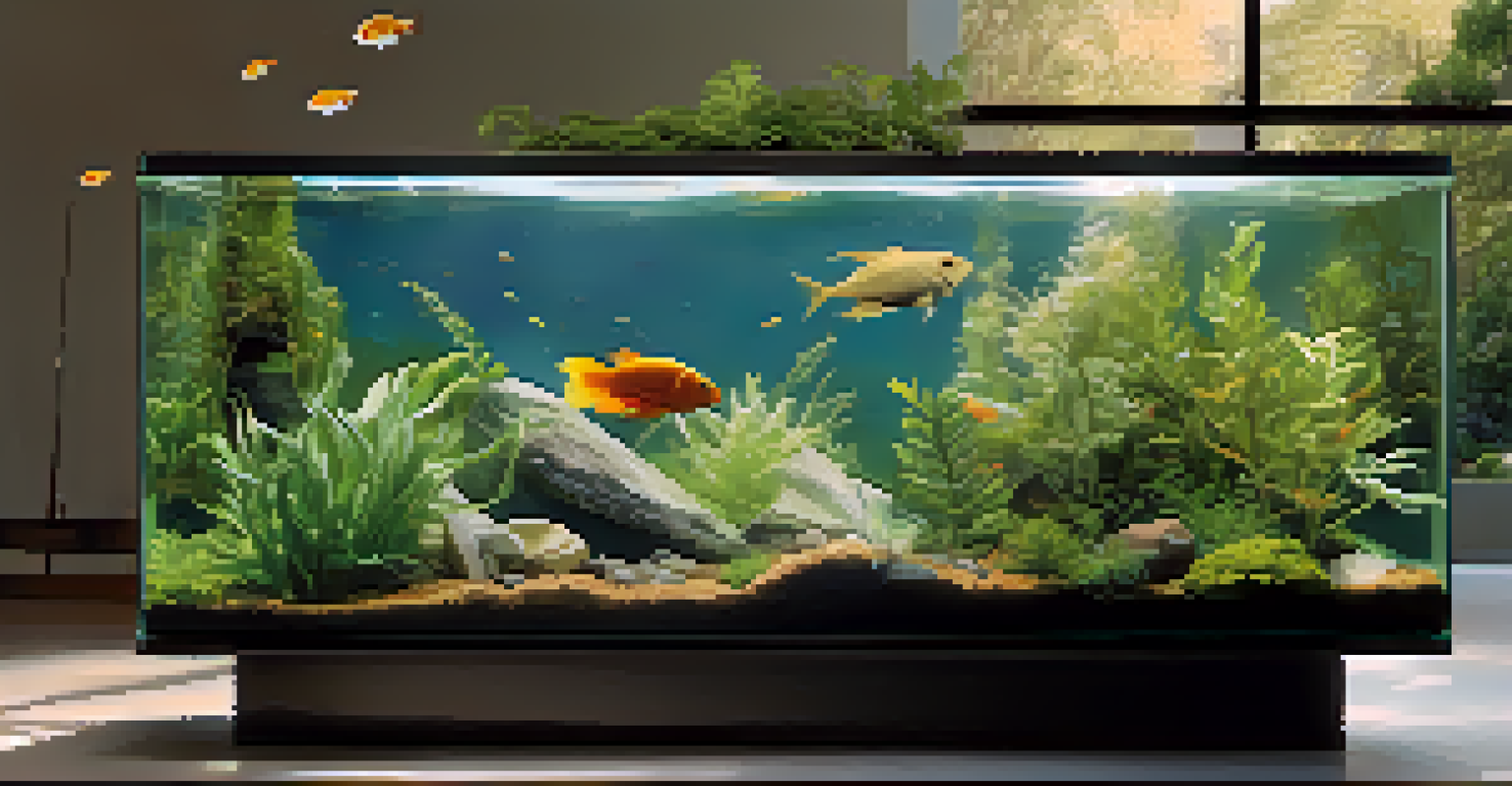The Impact of Water Quality on Aquascaping Success

The Foundation: What is Water Quality?
Water quality refers to the physical, chemical, and biological characteristics of water. It plays a vital role in the health of aquatic ecosystems. Just like soil quality is essential for gardening, water quality is crucial for aquascaping.
Water is the driving force of all nature.
Key factors in water quality include pH level, hardness, temperature, and the presence of contaminants. These elements affect not only the plants but also the fish and other organisms that inhabit the aquascape. A balanced environment ensures that everything thrives.
For example, a pH level that is too high or too low can stress fish and hinder plant growth. Understanding these parameters helps aquascapers create a thriving underwater landscape.
How pH Levels Influence Aquascaping
pH levels measure how acidic or alkaline the water is, ranging from 0 to 14. Most aquatic plants and animals thrive in a pH level between 6.5 and 7.5. Deviations from this range can lead to poor health and growth.

For instance, if the water is too acidic, it can harm fish gills and stunt plant growth. On the other hand, overly alkaline water may limit the availability of nutrients. Regular testing is essential to maintain the right balance.
Understanding Water Quality Basics
Water quality encompasses the physical, chemical, and biological characteristics necessary for a thriving aquascape.
Maintaining the appropriate pH not only promotes healthy fish and plants but also enhances the overall aesthetic of the aquascape, making it visually appealing.
The Role of Water Hardness in Aquascaping
Water hardness refers to the concentration of minerals, particularly calcium and magnesium, in the water. It affects plant growth and the health of aquatic life. There are two types: general hardness (GH) and carbonate hardness (KH).
The health of our waters is the principal measure of how we live on the land.
Plants like Anubias and Java Fern thrive in softer water, while others may prefer harder settings. Knowing the hardness of your water helps you choose the right plants and fish for your aquascape.
For example, if you introduce fish that prefer harder water into a soft-water environment, they may become stressed and susceptible to disease. Understanding water hardness is key to a successful aquascape.
Temperature: A Crucial Factor for Aquascaping
Temperature affects the metabolic rates of aquatic organisms, influencing growth and behavior. Most aquatic plants and fish have specific temperature ranges they thrive in, typically between 22°C and 28°C (72°F to 82°F).
Exceeding or dropping below these temperatures can lead to stress, stunted growth, or even death. For example, tropical fish require warmer water, while some species prefer cooler conditions.
Importance of pH and Hardness
Maintaining the right pH and hardness levels is crucial for the health of aquatic plants and fish.
Maintaining a stable temperature is essential for creating a harmonious environment, allowing both plants and fish to flourish together.
The Importance of Filtration in Water Quality
Filtration systems are vital for maintaining water quality in an aquascape. They help remove debris, toxins, and excess nutrients, creating a healthier environment for aquatic life. A good filtration system mimics natural water conditions.
Choosing the right filter depends on the size of your aquascape and the specific needs of your plants and fish. For example, canister filters provide powerful filtration for larger tanks, while sponge filters work well for smaller setups.
Regular maintenance of the filtration system is also crucial. A clean filter ensures optimal water circulation and quality, promoting the overall health of your aquascape.
Nutrient Balance: Feeding Your Aquascape
Just like any garden, aquascapes require a balanced supply of nutrients to flourish. Essential macro and micronutrients, such as nitrogen, phosphorus, and potassium, must be present in the right amounts for plants to grow healthy and strong.
Using fertilizers can help provide these nutrients, but over-fertilizing can lead to algae blooms, which compete with plants for resources. Finding the right balance is key.
Role of Filtration and Nutrients
Effective filtration and balanced nutrient levels are essential for sustaining a healthy aquascape environment.
Regularly testing the water for nutrient levels can help maintain this balance, ensuring that your aquascape remains vibrant and healthy.
The Impact of Contaminants on Aquascaping Success
Contaminants like chlorine, heavy metals, and pesticides can severely impact water quality and aquatic life. These substances can enter the water supply through various sources, such as tap water or runoff from nearby areas.
Using a water conditioner can help neutralize harmful chemicals before they enter your aquascape. It's essential to be proactive in testing your water for contaminants.

By ensuring that your water is free from harmful substances, you create a safe and healthy environment where plants and fish can thrive.